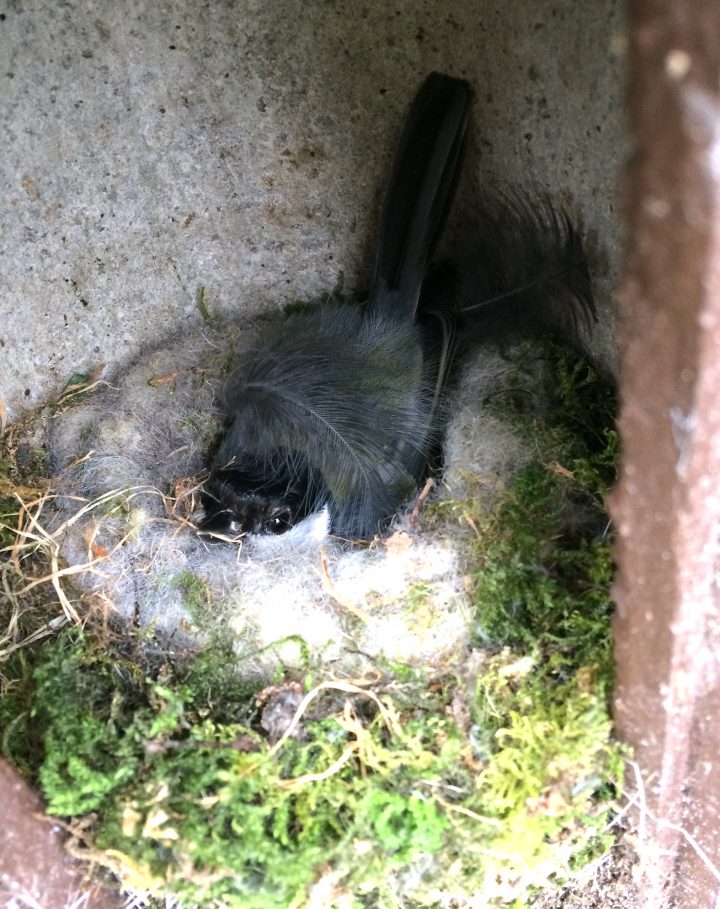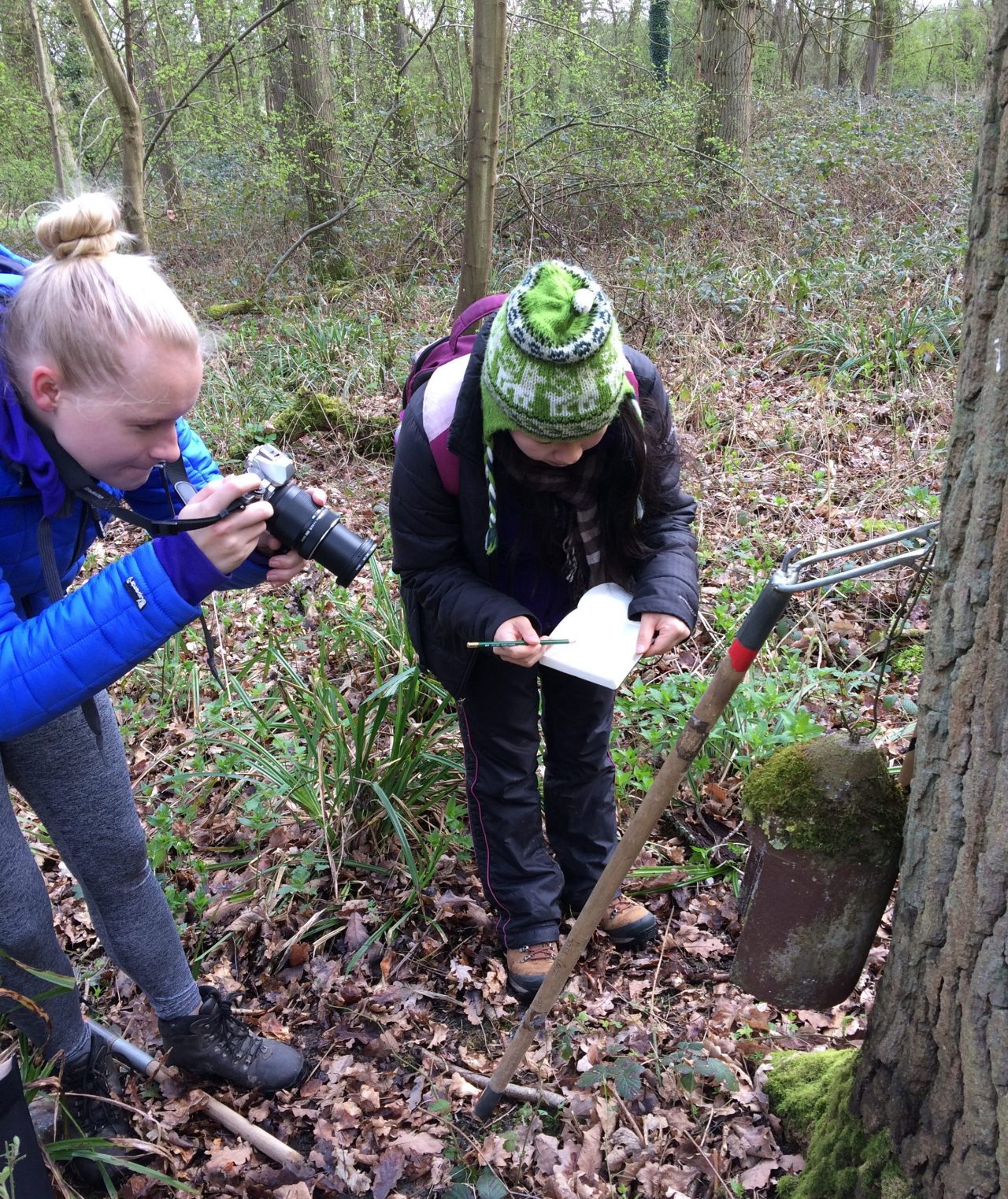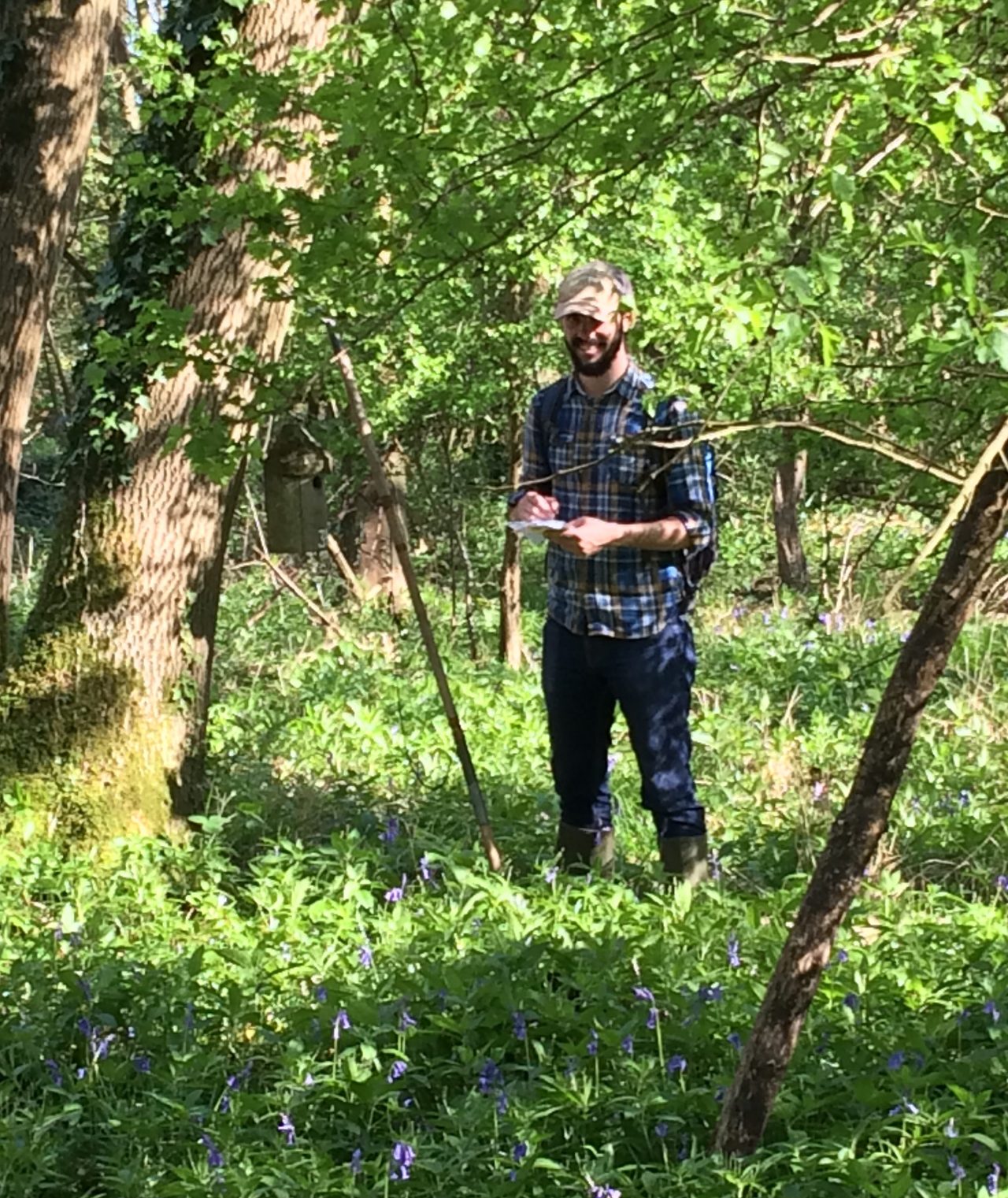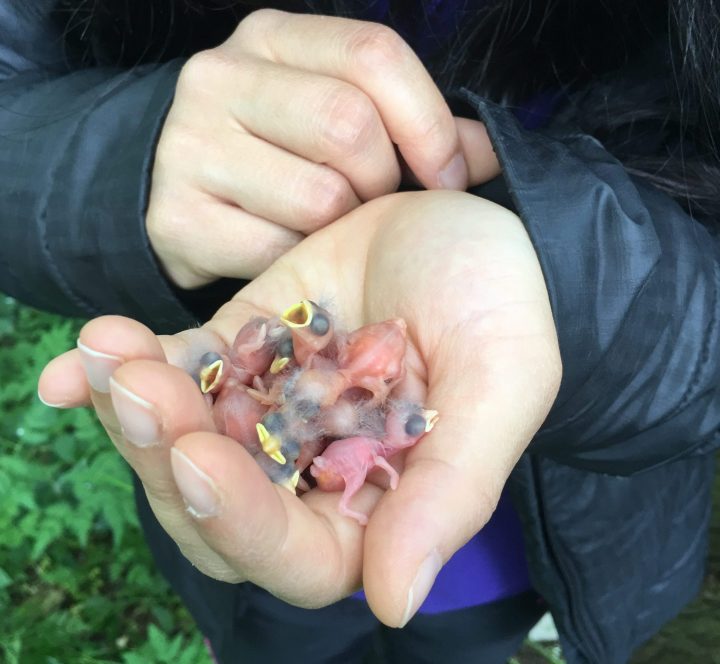Field Notes: Recording Dawn Chorus in the British Countryside
It’s approaching 5am and still almost completely dark in the woodlands outside of Oxfordshire, UK. I am wading through waist-high undergrowth in my waterproof field gear, trying to be as silent as possible. Angling my map so that it is illuminated in the moonlight, I confirm I’m in the right location, then sit down on a mossy log and start assembling recording equipment.
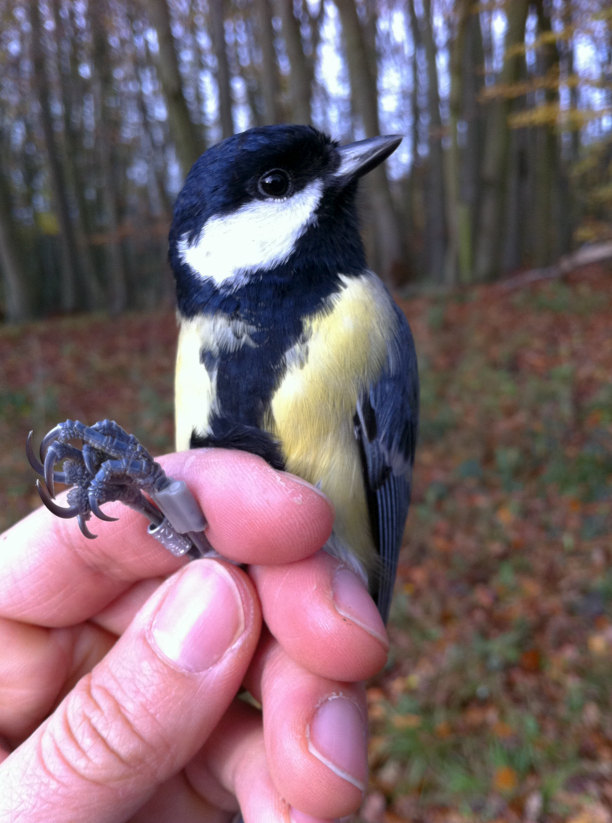
This morning I met my field assistant, recent Cornell grad Dallas Jordan, on the cobbled streets of Oxford and drove a few miles out of town to Wytham Woods, which lies just beyond the River Thames. We have gotten up at bird o’clock hoping to record the dawn chorus of great tit (Parus major), the British cousins of North American chickadees. During springtime, males of this species awaken at first light determined to do one thing: sing their hearts out. Like the primo uomo playing the starring role in an opera, males perch beside their nest and sing as loud as they can, waking up their female mates to a dramatic serenade that includes every song they know. Since males typically know about eight songs at most and each song lasts a few minutes, the entire performance takes about half an hour.
Dawn chorus has been studied extensively–this glorious cacophony is what leads many people to become birders. It’s pretty well understood that when a male bird sings, he’s simultaneously trying to impress his mate while also sending a message to nearby males saying “stay away!”. However, the more we study birds, the more complicated the story gets. It turns out males adjust their singing habits depending on all kinds of factors—ambient noise from traffic, whether there are rival males singing nearby, and even how fertile their mate is.
To address more complex questions about the ecological and evolutionary drivers of bird behavior, Oxford scientists have placed nest boxes throughout the woods, which great tits use during the breeding season. Females sleep in these boxes every night from March until June, incubating their eggs and caring for chicks after they hatch. Males sleep nearby in a different nest box, but reliably show up at sunrise every morning to greet their mate.
One advantage of working in this well-studied population is that we can tease apart the various factors that influence male singing behavior. Great tits aren’t born knowing how to sing; it’s something they learn from nearby birds, and they can continue to acquire new songs throughout their lives. Because most birds in Wytham Woods are tracked from birth, we know exactly which nest they were born in, the identities of their parents, and which birds they have flocked with throughout their lives. By combining this detailed data about an individual’s changing social environment with recordings of his song, we can gain insight on exactly when learning occurs and from which other birds he chooses to learn. Ultimately, this can help us to better understand how learned skills are transmitted socially and how cultures evolve in other species.

Columbia University Student Sarah Bai and Oxford Brookes University Student Lara Bates-Prior checking a nest box in mid-March 2017. 
Field assistant Dallas Jordan weighing chicks in late April 2017.
As the sun starts to come up over the English forest, a brightly colored male flies up and perches inches away from the nest I’m observing. After ruffling his feathers and preening for a moment, he bursts into an exuberant song. Adjusting the amplitude input on my directional microphone, I listen closely as I record the male’s entire repertoire. The female can be heard faintly calling back in between stanzas. Mates can recognize each other by voice, so she knows it’s him without having to peek out from the nest.
When the song ends, the female flies into the canopy and he follows; their day has begun. The woods that were silent only an hour ago are now almost overwhelmingly loud with a mix of robins, blackbirds, wrens, and warblers. Back at the field station we’ll start analyzing recordings, hopefully getting a better idea of exactly how birds are acquiring these distinctive song displays. Our findings will add to the huge body of knowledge generated from the long-term study that has been conducted here since 1947, helping to give a more complete picture of the evolutionary and ecological forces that shape behavior.
If you’d like to learn more about current research in Wytham Woods, see the latest news here.


